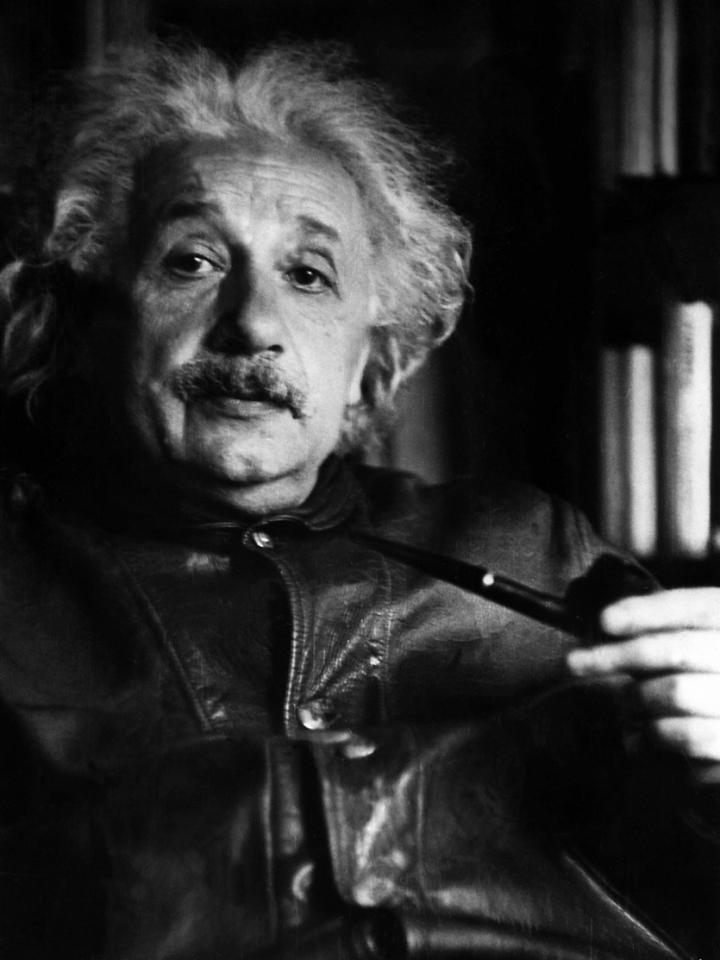-

Was the speed of light faster at the beginning of the universe?
Physicists challenge the theory of inflation and Einstein's special relativity to explain the uniform temperature of the universe. Cathal O'Connell reports.
They don’t make light like they used to. Today’s light, chugging along at 299,792,458 metres per second, would have been blown away by photons of the early universe travelling trillions of times faster – or so says a newly beefed-up theory of physics.
Portuguese physicist João Magueijo first proposed superfast light in 1998 to explain the uniform temperature of the early universe. But because it contradicts Albert Einstein’s theory of special relativity, it never quite caught on.
Now, writing in Physical Review D, Magueijo and his colleague Niayesh Afshordi produced a testable prediction from the theory. That’s something a rival idea, cosmic inflation, has never managed to achieve.
“If true, it would mean that the laws of nature were not always the same as they are today,” Magueijo said in a statement.
He first proposed a changing speed of light to explain one of the grand mysteries of modern cosmology, the so-called horizon problem, which relates to the bafflingly even temperature across the whole universe.
Imagine switching a heater on at the back of a cold concert hall and the whole room right up to the stage warming instantly.
A similar anomaly – on a cosmic scale – has been puzzling physicists since the 1960s when they first measured the cosmic microwave background, a map of the oldest light in the universe, and found it to be pretty much the same in all directions.
This meant that when the light of the cosmic microwave background was emitted, about 300,000 years after the Big Bang, the entire universe must have had the same temperature. But how could that be so, when some of the regions were so far apart that no light – and therefore no heat – could possibly have travelled between them?
The most popular explanation for the horizon problem is the theory of inflation, which says the universe expanded at an incredible rate in its first fraction of a second. Cosmic inflation has the effect of smoothing things out wonderfully, like putting the early universe in a blender.
LAYING OUT A TESTABLE PREDICTION IS A BADGE OF HONOUR IN THE SOMEWHAT NEBULOUS WORLD OF THEORETICAL PHYSICS
Physicists favour inflation because it seems to explain several mysteries at once, although no direct evidence for it has yet been found. Plus we still have no idea what caused inflation, nor why it stopped.
Magueijo’s idea dispenses with inflation altogether. Instead, he proposes that in the early universe, light travelled many trillions of times faster than it does today. These superfast heat-carrying photons then explain how the temperature of the universe equilibrated as fast as it did.
It’s a neat idea, but one that contradicts Einstein’s theory of light, space and time.
In Einstein’s 1905 theory of special relativity, the speed of light is the cosmic speed limit – defining the maximum speed that any information, or any force, can travel. This means the speed of light is also the speed of gravity.
Magueijo’s latest refinement separates the two, proposing that light initially travelled far faster than gravity before settling down to its current speed soon after the Big Bang.
Importantly, this new version of the theory makes a testable prediction.
The prediction concerns a feature of the cosmic microwave background called the spectral index, which describes how the noise within the background varies with scale. Magueijo and Afshord predicts a value of 0.96478, which is close to the latest data from the Planck satellite (0.967) and within the measurement’s margin of error.
The pair describes the model as “more predictive than inflation”. Laying out a testable prediction is a badge of honour in the somewhat nebulous world of theoretical physics, where theories can often be retrofitted to match the latest data.
But they are sober in recognising their theory will live or die by the hand of new data: “Improved observations will soon vindicate or disprove this model.”
This may come sooner rather than later. Two new ground-based telescopes in South America will help – the Cosmology Large Angular Scale Surveyor (CLASS) array of microwave telescopes in Chile and the planned Q-U Bolometric Interferometer for Cosmology (QUBIC) experiment in Argentina.
Meanwhile, NASA and others are laying the groundwork for Planck's direct successor, the space-based CMBPol mission.
Quelle: COSMOS
